[Editor: This military ration book, issued to Charles Fell, was issued for use during January 1919, just after the end of the First World War (1914-1918).]
Leave or Duty Ration Book
[Ration book, front cover]
[Handwritten text, in italics]
LEAVE OR DUTY
RATION BOOK
SOLDIER OR SAILOR.
Serial No. L3 No. 193579
1. Holder’s name} C. Fell
Rank} Pte
Number} 14810
2. Unit or Ship 1st A. C. D.
3. Proceeding from France
4. Beginning of leave or duty 14/1/19
5. End of leave or duty 29/1/19
6.Is holder proceeding at end of
leave or duty on Active Service
Abroad or Service Afloat?} Action
7. Signature and Rank
of Officer issuing} Capt
8. Unit or Ship of Officer issuing For S.C. Havre
N. 9 (Revised).
IF FOUND, RETURN TO ANY FOOD OFFICE.
[Ration book, inside front cover]
INSTRUCTIONS TO HOLDER.
1. Each coupon in this book, other than meat coupons, represents one week’s civilian ration. The meat coupons entitle you to purchase meat at a shop according to the official Table of Equivalent Weights displayed in the shop. A coupon or half-coupon may be used to buy a meal anywhere.
2. The book is not transferable. You must produce the book whenever you buy any rationed food, or a meat meal. The seller will detach coupons. Coupons already detached are useless.
3. You must spread your coupons over the full period of leave and of your journey out and back. No fresh book will be issued to you. If the period of your leave or duty is extended, you must take this book, with the document authorizing the extension of leave or duty, to the Local Food Office, who will issue an Emergency Card to cover the remainder of your leave or duty. This book ceases to be valid at the expiration of your leave or duty as indicated by the date entered opposite 5 on the front of this cover.
PENALTIES FOR MISUSE. — £100 or Six months’ imprisonment, or both.
[Ration book, leaf 1]
[Coupons have all been used.]
[Ration book, leaf 2]
[Coupons named “Meat S. or S.”.]
[Ration book, leaf 3]
[Coupons named “Cheese (if rationed)”, “Jam (if rationed)”, “Spare I”, and “Spare II”.]
[Ration book, inside back cover]
[No text.]
[Ration book, back cover]
INSTRUCTIONS TO SELLER.
1. Each coupon in this book, other than the meat coupons, represents the civilian weekly ration for the time being in force.
2. Each meat coupon has the same value as a coupon in the Adult’s Ration Book (B).
3. The seller must detach the proper number of coupons for the amount sold.
4. This book is valid only during the period of leave or duty, which is indicated by the dates entered opposite 4 and 5 on the front cover.
(83571) Wt. /1712 1,000,000 12-18 W B & L
Source:
Original document
Editor’s notes:
Dimensions (approximate): 105 mm. (width), 70 mm. (height) (measurements of front cover).
The name written in the “Unit or Ship of Officer issuing” section is somewhat unclear, although it appears to be “Havre”. The 1st Australian Convalescent Depot operated at Le Havre (on the northern coast of France).
See: 1) “AWM8 Subclass 26/84 – 1st Australian Convalescent Depot (Le Havre)”, Australian War Memorial (Canberra)
2) “Australian Army Medical Corps in World War I”, Anzac Portal (Department of Veterans’ Affairs, Australian Government) [“Australian troops typically embarked in France at the ports of Rouen and Le Havre and arrived at Southampton. They returned to France through Le Havre.”]
3) “Le Havre”, Wikipedia
See also: “People at 1st Australian Convalescent Depot”, Virtual War Memorial Australia
A. C. D. = Australian Convalescent Depot
Capt = an abbreviation of “Captain”
Le Havre = a port city on the northern coast of France
Pte = an abbreviation of “Private” (the lowest rank in the army; aside from “recruit” in the modern army, being someone who has not as yet passed basic training)
S.C. = Staff Captain
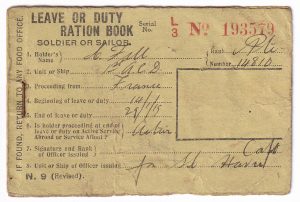
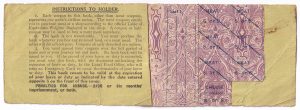
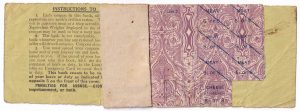
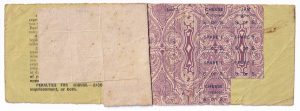
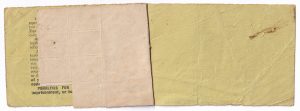
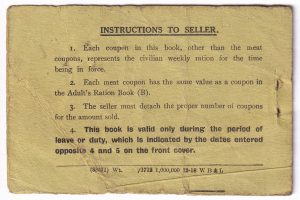
Hello once more, Dear Ed.
At number 8 above, you have transcribed as follows:
“8. Unit or Ship of Officer issuing For H. Ha[?]”.
Like you, at first glance, I thought that it was H. Hav…
However, the two “H”s are NOT written the same.
Therefore I think that the first “H” is NOT an “H” at all.
It now looks more like “S.C.” — I am not familiar with army abbreviations, but it might be something like an alternative for “C.O.” for “commanding officer’. So: S…. Commanding; perhaps?
AND, after having searched again at naa.gov.au for “1st Australian Convalescent Depot” and getting 47 hits. There are mentions there of a Depot at Le HAVRE in France.
Therefore, I am now thinking that, the Captain of the Depot was authorising it; but the paperwork was signed off by a desk jockey/admin person on behalf of the “S.C.” (or alternative) at HAVRE.
HTH. Raymond. H.
Good call on “S.C.”, the text has been changed accordingly.
Several sites give “S.C.” as “Staff Captain”.
e.g. https://www.awm.gov.au/learn/glossary/s
“S.C.” has been added to the Editor’s Notes.
Great call on Le Havre!
“S.C.” might have been picked up on, at some later date (though probably not).
However, there is no way I would have transcribed the last word as Havre, let alone made the connection.
Great work on that one!